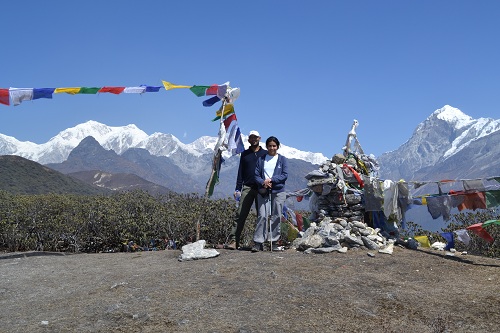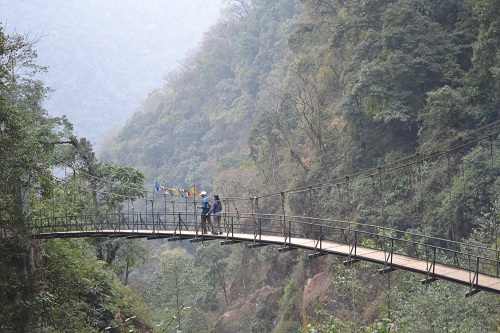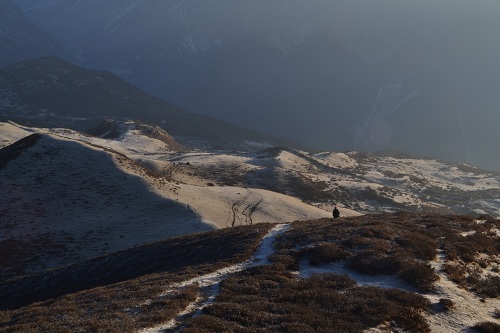One of the things we looked forward to about taking this extended break was that we had the time to reach the far corners of the world – places that were too hard to get to and appreciate on a one week vacation. Three flights, four cars, five horses and thousands of steps later, we finally reached one such place – the Sikkimese mountain of Dzongri, in the middle of the Himalayan mountains. Dzongri offers untouched mountain terrain, complete seclusion and a perfect view of Kanchenjunga, the world’s third highest peak.
We had done overnight trekking in Thailand and Burma, but nothing prepared us for the magnificence or challenge of scaling 14,000 feet up the Himalayas in Sikkim. Nestled between Nepal, Tibet and Bhutan, Sikkim is not an easy place to reach. It was a Buddhist Kingdom until 1975, when it became a state of India. The road to Dzongri ends in the tiny town of Yuksom. From there, a narrow mountain trail leads people and their accompanying pack animals into the depths of the mountains. The entire trek is in the Kanchenjunga National Park and is completely devoid of permanent inhabitants. Apart from the path, and a handful of modest trekking huts, the only reminders of human life in these mountains are modest Buddhist stupas and prayer flags.

Perhaps because of its elusiveness, Sikkim is one of the most beautiful places we have ever been to. Some refer to it as the last Shangri-La, and we agree. During our hike we went through distinct topography every day, each seemingly competing with the other for beauty. On day one we trekked up to 6,000 feet, through lush green mountains, full of orchid crusted trees and magnolias. We reached 10,000 feet on day two, passing through dense pine forest. One day three we reached Dzongri, at 14,000 feet. Despite the height, Dzongri still has a carpet of red rhododendron bushes surviving among the Himalayan shadows. The trek was absolutely gorgeous at every turn, but it didn’t come without it’s challenges. We crossed three bridges each way, and each tested my extreme fear of heights.

We walked up to eight hours each day, pacing ourselves, hydrating and fueling up with food. We found the first two days relatively easy, and this was probably because we were completely enchanted with the ancient trees, rainbow of flowers and singing birds. Yes, it sounds like something out of a movie, but even Sandeep started calling it the trek to heaven. Once we left the greener altitudes, each step took more and more effort given the high elevation and low oxygen. The terrain the day we reached Dzongri was steep and rocky, and March’s melting snow made the path extremely slippery.

Our campsite in Dzongri seemed extraterrestrial. The earth was almost barren and the looming Himalayas appeared ready to engulf us. We happened to be there when there was no moon, so the only light was from the blanket of stars, which seemed close enough to grab.
Our night in Dzongri tested our wits. It was bitterly cold, and the high altitude pounded at our heads and deprived us of any hope of sleep. At 4 A.M the next morning we made a short trek with our flashlights to the viewpoint to see the sun rise over the snow capped mountains surrounding us. With no sleep and heavy legs, we almost turned back. We’re not ones to wake up for sunrises and we wondered if this was all worth it. Our guide gently nudged us to put one foot in front of the other until we finally reached the summit. The view of the Himalayas in the crisp morning literally took any breath we had left away.
Standing in the shadows of the Himalayas has to be one of the most humbling things for a human to experience in nature. The Himalayan range has brought adventurers from all over the world, and its peaks are considered sacred by Buddhists. Despite watching documentaries and movies that featured mountains such as Everest, nothing prepared us for being face to face with the imposing mountains.